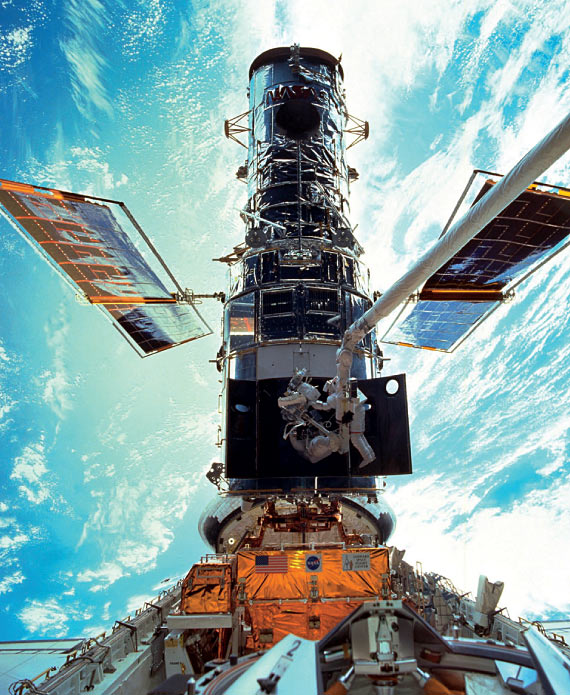Chapter 6 Sample Pages
1 | 2 | 3 | 4

Download Chapter 6 Sample pages - PDF (1.97 MB)
Download the Full Chapter 6 - PDF (9.4 MB) |
|
Features:
- Hardcover
- 132 pages (24,000 words)
- Publisher: Wiley-VCH (English, German), URSA (Finnish)
- Lots of full-page photographs
- Boxes and illustrations give an understandable overview of processes, telescopes and backgrounds.
- Similar in style to the popular Hubble — 15 years of discovery
- Aimed at laypeople
- To be launched for the International Year of Astronomy 2009
- Size: 247 mm (W) x 297 mm (H)
- Available in English, German, Finnish, Korean, Japanese, Chinese and Slovenian
The authors' unique skill in science communication allows for a popular writing style, with an emphasis on the many facets of the telescope. They make good use of their access to the most striking images in the field, creating full-colour illustrations as needed.
Orders:
| Table of Contents |
|
Foreword
|
7 |
1. New Views of the Skies
The invention of the telescope has been by far the most revolutionary development in the history of astronomy. For thousands of years, astronomers only had their own eyes to rely on in unravelling the mysteries of the Universe. The telescope revealed an embarrassment of astronomical riches, and led to a dramatic increase of knowledge about the wider world we live in.
|
9 |
2. Bigger is Better
By the early 20th century, the United States took the lead in the development of the telescope. Following the Yerkes refractor (the largest of its kind in the world), George Ellery Hale was instrumental in realizing the famous telescopes at Mount Wilson and Palomar Mountain. Astronomers realized the importance of high-altitude sites, and photography and spectroscopy became their new tools.
|
27 |
3. Technology to the Rescue
In the 1970's and 1980's, it became clear that bigger telescopes *can* be built, thanks to new technologies that heavily depend on the use of computer power. Efficient telescope mounts, thin and/or segmented mirrors, and active optics made it possible to construct 8-meter-class telescopes. Still newer technologies, like adaptive optics and interferometry, even deal with the blurring effects of the Earth's atmosphere.
|
45 |
4. From Silver to Silicon
Capturing the light from the distant stars and galaxies with the telescope is only one half of the story. The actual detection of light is the other. Astronomy started as a visual science. Observations were done by eye and recorded as drawings and later on as photographs. The electronic revolution in the 1980's brought with it a range of new ways of recording light. The CCD detector and the digital image processing revolutionized astronomy.
|
63 |
5. Seeing the Invisible
No longer do telescopes just collect visible light. Scattered around the globe are astronomical facilities that 'see' the Universe at radio, (sub-)millimetre and infrared wavelengths. There are even 'telescopes' to study gamma rays, high-energy particles and gravitational waves, as well as neutrino observatories that need to be buried underground. Without this multispectral approach, the study of the Universe would be severely incomplete.
|
77 |
6. Beyond Earth
With the advent of spaceflight, astronomers realized the potential of Earth-orbiting telescopes. A space telescope could no longer be hampered by the disturbing effects of the atmosphere. Moreover, above the absorbing atmosphere, it would be possible to study long-wavelength infrared radiation, ultraviolet waves and x-rays. Space telescopes have revolutionized almost every field of astronomy.
|
95 |
7. What’s Next?
Bigger and more sensitive telescopes will always be on the astronomers' wish list. New projects are on the drawing board, both in space and on the ground. What kind of cosmic wonders will be revealed by the next generation of telescopes?
|
115 |
| Authors Bios |
130 |
|